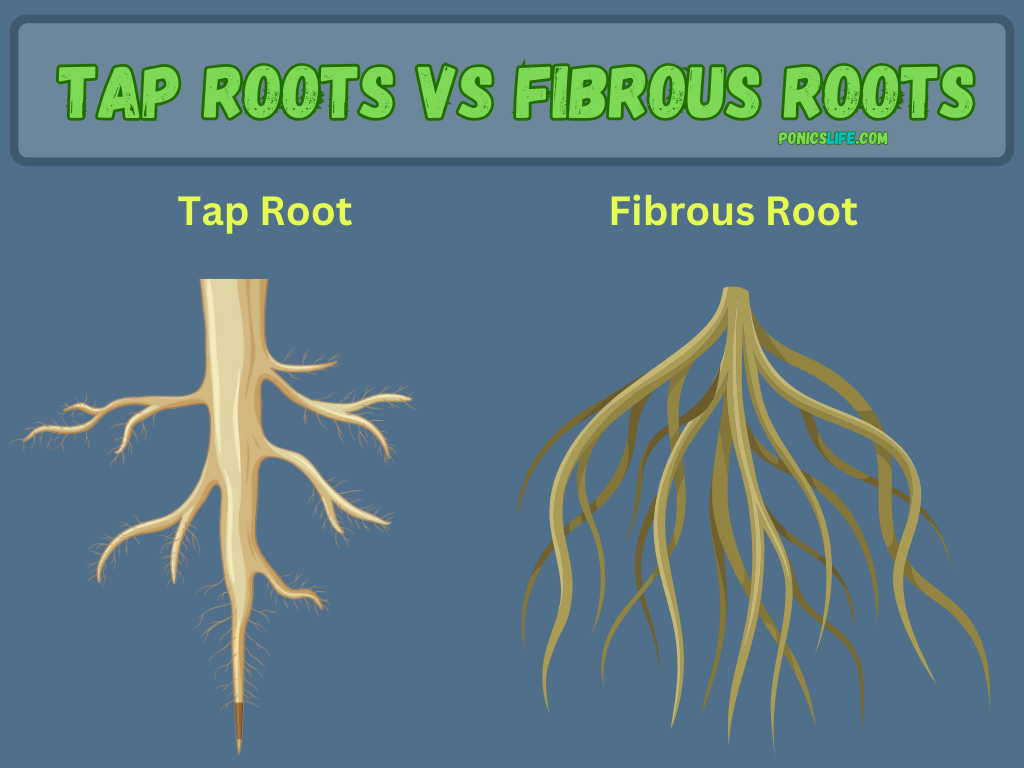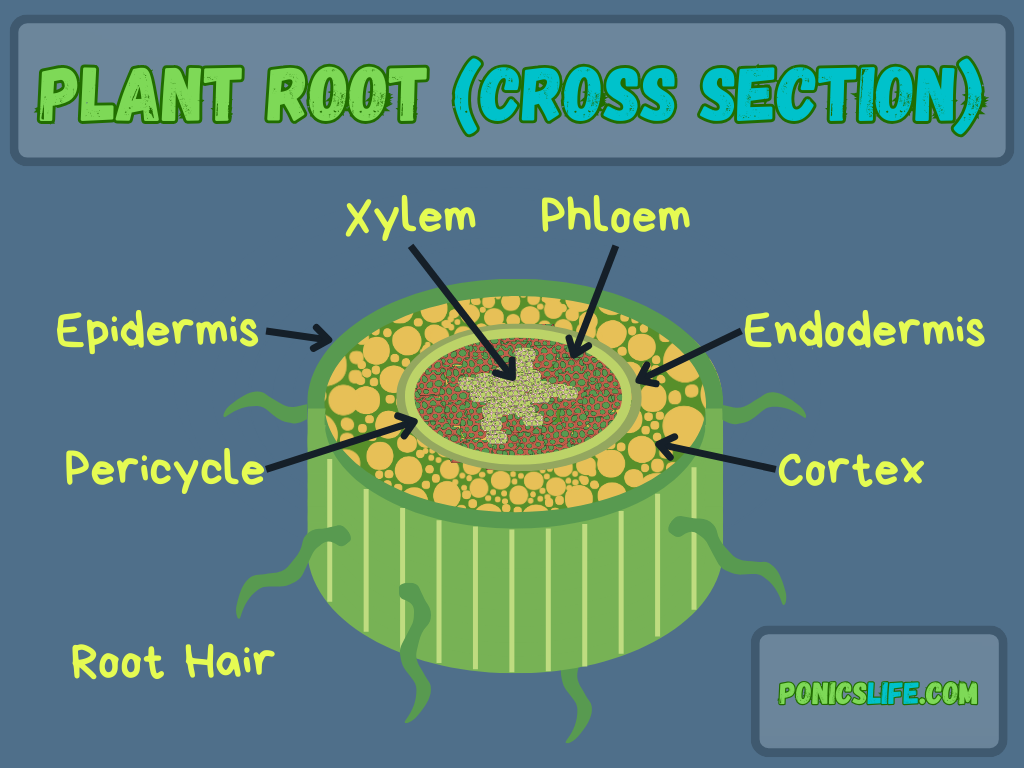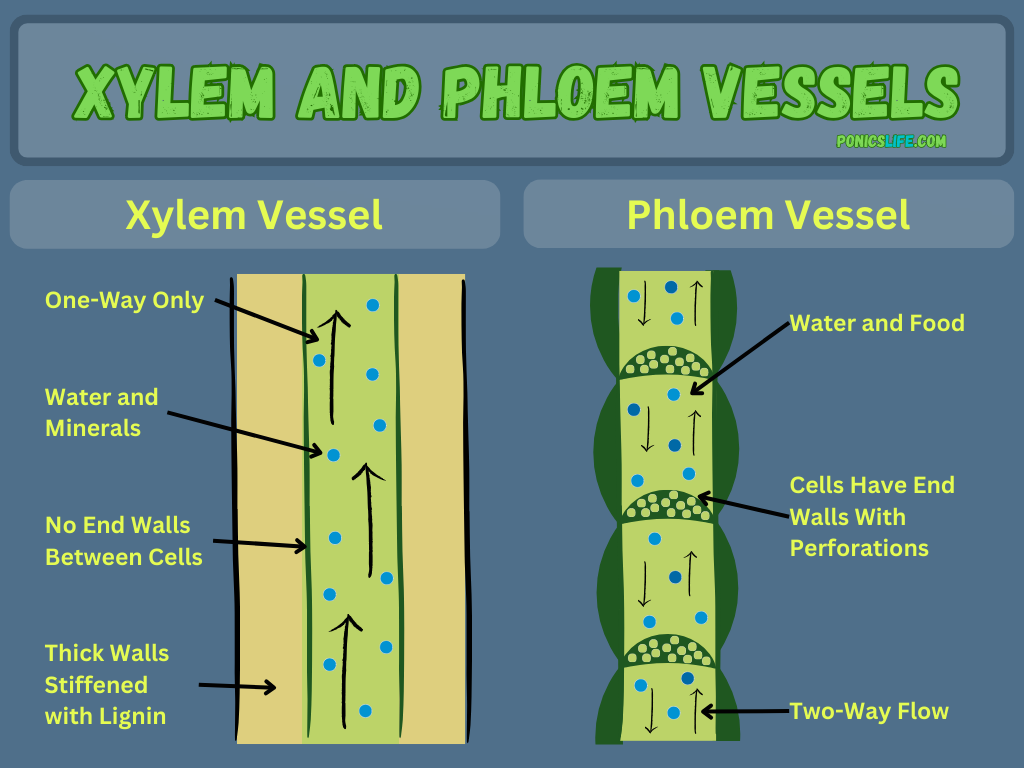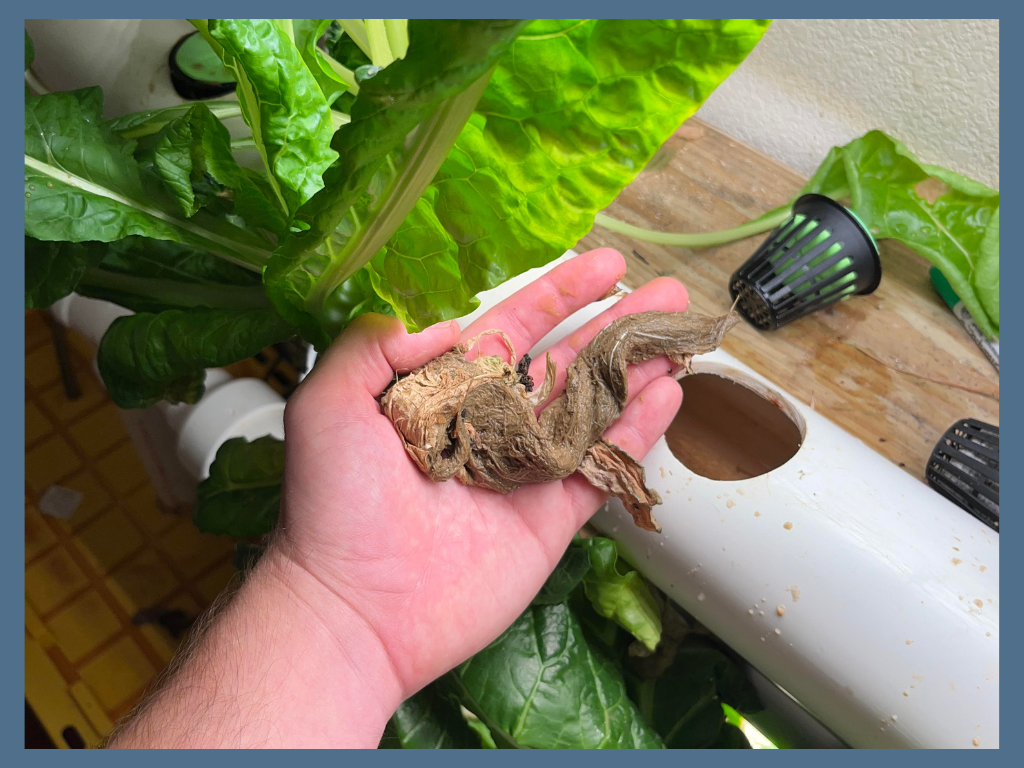Roots and Hydroponics
In the vast realm of gardening and agriculture, the intricate and often hidden world of roots marks the starting point for plant growth. Diving into the underground universe, we uncover the critical roles that roots play in both traditional and hydroponic cultivation, from anchoring plants and absorbing water and nutrients to storing vital sustenance.
The exploration delves into the structural complexities of roots, their growth behaviors, and the specialized care they require within hydroponic environments. Offering key insights for both the experienced gardener and those new to hydroponics, this narrative focuses on fostering plant health from the roots upward, aiming to enhance the success and vitality of gardening projects across the board.
Understanding Plant Roots
Understanding plant roots, how they anchor and support, absorb water and nutrients, and facilitate growth, is vitally important for optimizing plant health and yield in any hydroponic setting.
Root Functions
Roots are vital to a plant’s life, serving multiple critical functions that support not only the plant’s survival but also its growth and productivity. The primary functions of roots can be separated into three key areas:
Anchor and Support: Roots firmly anchor the plant into the medium, whether it’s soil or a hydroponic solution. This mechanical support is crucial, especially for tall or top-heavy plants, ensuring they remain upright and stable, facilitating proper growth and development.
Water and Nutrient Uptake: One of the most critical functions of roots is the absorption of water and nutrients from the environment. In hydroponics, this role is accentuated as roots are directly exposed to nutrient-rich solutions, allowing for efficient uptake. This process is essential for the plant’s photosynthesis, growth, and the synthesis of vital compounds.
Storage of Nutrients and Food: Roots often serve as storage organs for nutrients and carbohydrates. This stored energy supports the plant during adverse conditions such as drought or nutrient scarcity and fuels new growth during the growing season. In hydroponic systems, while nutrient availability is typically constant, the storage function of roots still plays a role in overall plant health and development.
Structure of Roots
Roots are complex structures that play a pivotal role in a plant’s ability to absorb nutrients and water, anchor itself, and store food. Their structure can be broadly categorized into two main types: taproots and fibrous roots, each with distinct characteristics and functions. Understanding the anatomy and structure of these root types is crucial for optimizing plant growth, especially in controlled environments like hydroponics.
Taproots: Characterized by a single, thick main root from which smaller lateral roots branch, taproots delve deep into the soil. This structure is typical of many vegetables and flowering plants, enabling them to access water and nutrients from deeper layers. In hydroponics, plants with taproot systems may require deeper growing mediums or specialized systems to accommodate the depth of root growth and ensure adequate nutrient uptake. Important Note: A tap-root root system is only found in dicots, not monocots.
Fibrous Roots: This root type features a network of similar-sized roots that spread out horizontally from the plant base, forming a dense mat. Fibrous roots excel in quickly absorbing moisture and nutrients from the surface, making them particularly suited to shallow hydroponic systems. These roots are common in grasses and many annual plants. Important Note: A fibrous root system is usually found in monocots.
Primary vs Lateral Roots: Primary roots emerge directly from the seed and grow downward to anchor the plant firmly and access deep water sources. Lateral roots branch out from the primary root, spreading horizontally to increase the root system’s surface area for more efficient absorption of water and nutrients. Together, primary and lateral roots create a comprehensive network that supports the plant’s growth, stability, and nutrient uptake, essential for the overall health and productivity of the plant.


Internal Structure: The internal structure of roots is essential for their function in plant growth and nutrient absorption. This structure can be categorized into three major parts, each playing a unique role in the root’s development and functionality:
- Meristem: Located at the root tip, the meristem is a dynamic area of cell division and growth. It’s responsible for manufacturing new cells that enable the root to extend further into the growth medium. This continuous cell production is vital for the root’s ability to explore new areas for water and nutrient uptake.
- Zone of Elongation: Situated just behind the meristem, the zone of elongation is where cells increase in size due to food and water absorption. This enlargement process is crucial, as it helps to push the root through the soil or growth medium, facilitating further exploration and access to resources necessary for the plant’s growth.
- Zone of Maturation: Located directly beneath the stem, the zone of maturation is where cells differentiate into specific tissues, such as the epidermis (outer layer), cortex (middle layer), and vascular tissue (inner transport system). This differentiation is key to the root’s ability to absorb and transport water and nutrients efficiently throughout the plant.


Anatomy of Roots: Beyond the basic types, the root’s anatomy is designed for efficiency in nutrient and water absorption. Key parts include:
- Root Cap: The protective structure at the root tip, helping the root navigate through the soil or growth medium.
- Root Hairs: These are tiny, hair-like extensions from the root epidermis, increasing the surface area for water and nutrient uptake. In hydroponics, ensuring the health of root hairs is vital for nutrient efficiency.
- Vascular Tissue: Comprising the xylem and phloem, the vascular tissue is essential for the transport of water, nutrients, and sugars throughout the plant. The xylem carries water and dissolved minerals upwards from the roots, while the phloem distributes sugars and other metabolic products.
How Roots Grow
Root growth is a dynamic process influenced by the environment, whether in soil or a hydroponic system.
In Soil: Roots grow by extending the primary root downward and spreading lateral roots outward, navigating through the soil matrix to access water and nutrients. This growth is guided by environmental cues such as moisture gradients and nutrient availability, with roots adapting their direction and rate of growth to optimize resource acquisition.
In Hydroponics: Roots are submerged in or exposed to a nutrient solution, where the absence of soil resistance allows for a different growth pattern. Roots tend to grow more freely and spread out within the nutrient solution, focusing less on penetrating a medium and more on maximizing exposure to the nutrient-rich environment. Hydroponics often results in a denser network of finer roots, enhancing the plant’s ability to uptake nutrients and water efficiently.
Roots as Food
Roots as food encompass a diverse range of vegetables, each with its unique nutritional profile and culinary uses. Sweet potatoes stand out as a swollen tuberous root rich in vitamins, minerals, and antioxidants, offering a sweet flavor and versatile culinary applications. Carrots, parsnips, salsify, and radishes are examples of elongated taproots, each providing distinct tastes and textures to various dishes. These root vegetables are not only prized for their ability to store energy in the form of carbohydrates but also for their dietary fiber, contributing to digestive health.
Oxygenating Your Roots
Oxygenation is crucial for the health and efficiency of hydroponic root systems. Roots require oxygen for respiration, a process that enables them to convert sugars into energy for growth and nutrient uptake. In hydroponic systems, where roots are immersed in water or nutrient solutions, ensuring sufficient oxygen levels is essential to prevent root rot and other oxygen-deprivation issues. Adequate oxygenation promotes healthy root function, enhances nutrient absorption, and supports vigorous plant growth.
Methods to increase oxygenation in hydroponic systems include using air pumps and stones, creating air gaps, misting (aeroponics), falling water/splashing, and/or utilizing the venturi effect. Each one circulates oxygen within the solution, ensuring roots receive the oxygen they need to grow.
What Roots Should Look Like
Healthy roots are the foundation of a thriving plant, and their appearance can provide vital clues about the plant’s overall health and growing conditions. Understanding what healthy roots should look like is crucial for hydroponic gardening.
White and Creamy: Healthy roots typically exhibit a white or creamy color, indicating vigorous growth and optimal nutrient absorption. This coloration suggests that the roots are actively functioning and free from disease or decay. In hydroponic systems, where roots are often visible, this characteristic is a clear sign of health.

Hairy Air Roots: The presence of fine, hair-like structures, or air roots, is a positive indication of a healthy root system. These tiny roots will appear wherever there’s an ‘air gap’ or ‘heavy air exposure’ and will ultimately increase the surface area for water and nutrient absorption, crucial for the plant’s growth. In hydroponics, these air roots also help with oxygen absorption, a key factor in root respiration and overall plant health.
Tangled or Untangled: The organization of the root system can vary depending on the plant species and the growing environment. In general, a certain degree of entanglement is normal, especially in hydroponic systems where roots grow in close proximity. However, roots should not be so densely tangled that they restrict water flow or impede their own growth. Roots spreading freely are often a sign of a healthy hydroponic system and what’s most important is that they have ample space for root expansion.
What Roots Shouldn’t Look Like
Understanding what roots should not look like is equally important as understanding what they should look like. Certain appearances can indicate problems that may need immediate attention.
Discolored Roots: Roots that are brown, black, or any color significantly darker than white or cream may indicate problems. Healthy roots should have a light, vibrant appearance, and any deviation towards darker hues could signal decay, disease, or poor nutrient absorption.
Slimy or Mushy Texture: Roots that feel slimy or mushy to the touch are a clear sign of unhealthy conditions. This texture often accompanies root rot, a condition where roots are damaged and begin to decay, usually due to excessive moisture and insufficient oxygen levels. Root rot can severely hamper a plant’s ability to absorb nutrients and water, leading to further health decline.
Root Rot: One of the most serious conditions to watch for is root rot, a fungal or bacterial infection that occurs when roots are overly saturated and lack adequate oxygen. This condition is characterized by dark, mushy roots that may give off a foul odor. In hydroponic systems, root rot can spread quickly if not addressed, affecting the health of the entire setup. Ensuring proper oxygenation and monitoring water levels closely can help prevent this detrimental condition.

FAQs
Is root rot treatable?
Yes, root rot can be treated, especially if caught early. The first step is to remove the affected plant from its current environment to prevent the spread of the disease. Trim away the rotten parts of the roots, and then wash the healthy roots with a mild hydrogen peroxide solution to kill any lingering pathogens. Finally, replant in fresh, sterile growing medium or solution, ensuring proper oxygenation to prevent future occurrences.
What can I do to prevent root rot?
Preventing root rot primarily involves ensuring adequate oxygenation of the root zone and avoiding overwatering or overly saturated conditions. In hydroponics, using air pumps and stones to circulate oxygen, ensuring the nutrient solution (EC) is not too dense, and monitoring water levels can help prevent root rot. Additionally, maintaining a clean growing environment and using sterile equipment can minimize the risk of fungal and bacterial infections.
Where did this information come from?
The information provided in this article draws from a comprehensive guide on vegetative plant parts by the Oregon State University Extension Service and Dr. Howard Resh’s Hydroponics for the Home Grower book, along with general best practices in hydroponic gardening and plant care. These resources offer valuable insights into plant root systems, their functions, and how to maintain healthy growth in both soil and hydroponic setups.
Can hydroponic roots become too long or too dense?
In some setups, yes, roots can become overly long or dense, potentially leading to issues like reduced water flow or oxygenation problems. Regular pruning or choosing a hydroponic system with adequate space for root growth can help manage this.
Are there any specific nutrients that are crucial for root development?
Nitrogen, phosphorus, and potassium (NPK) are essential for root development, with phosphorus playing a particularly critical role. Additionally, micronutrients like manganese, zinc, and copper are important for healthy root growth.
Is there also applicable to Aquaponics?
Yes, this is also applicable to aquaponics, as aquaponic roots function and grow the same way as hydroponic roots.
Is there a good place for general hydroponic information?
If you’d like to learn more, our Hydroponic Hobby Center has easy and accessible information on Hydroponics that covers everything from the basics to advanced systems.






